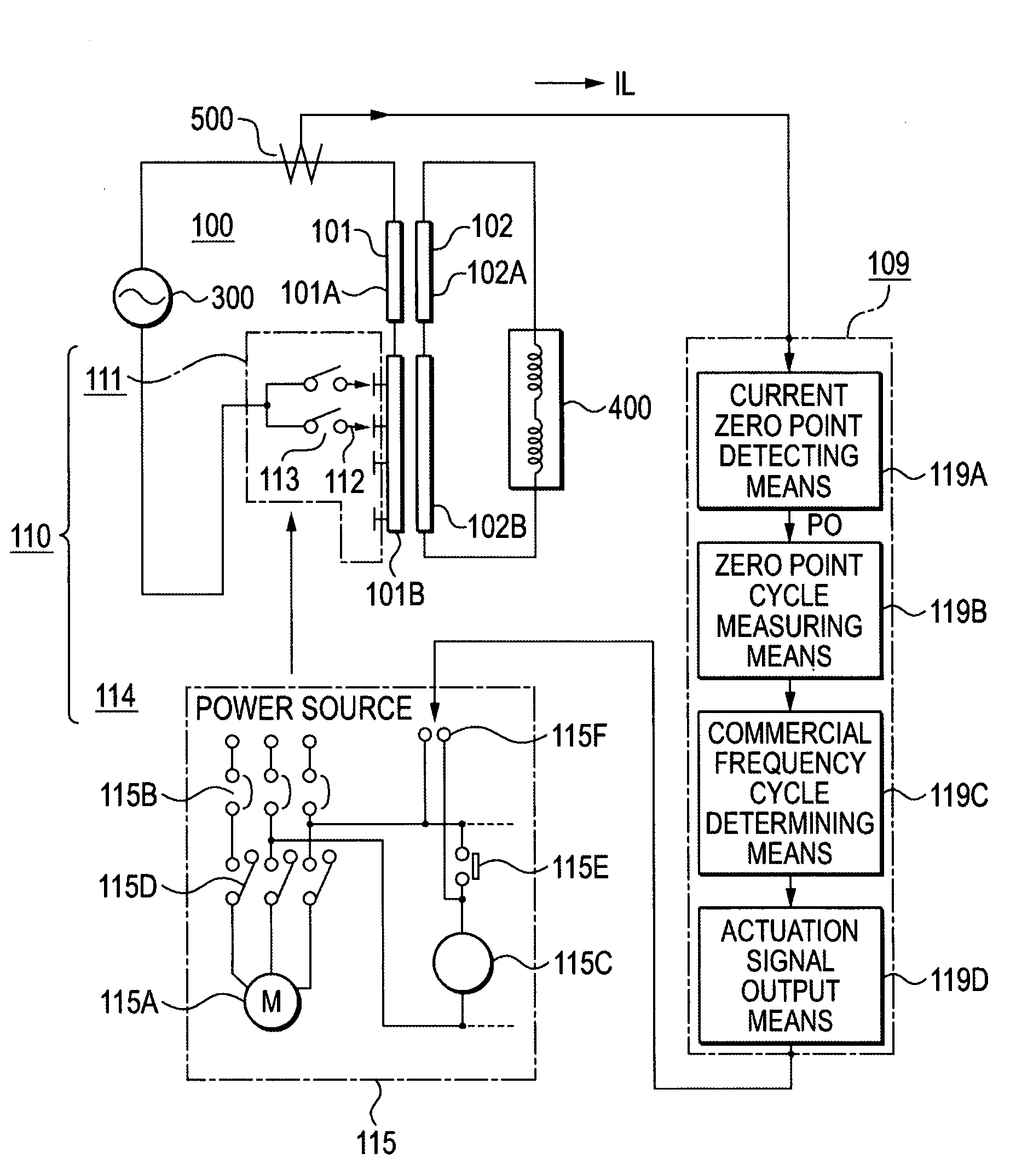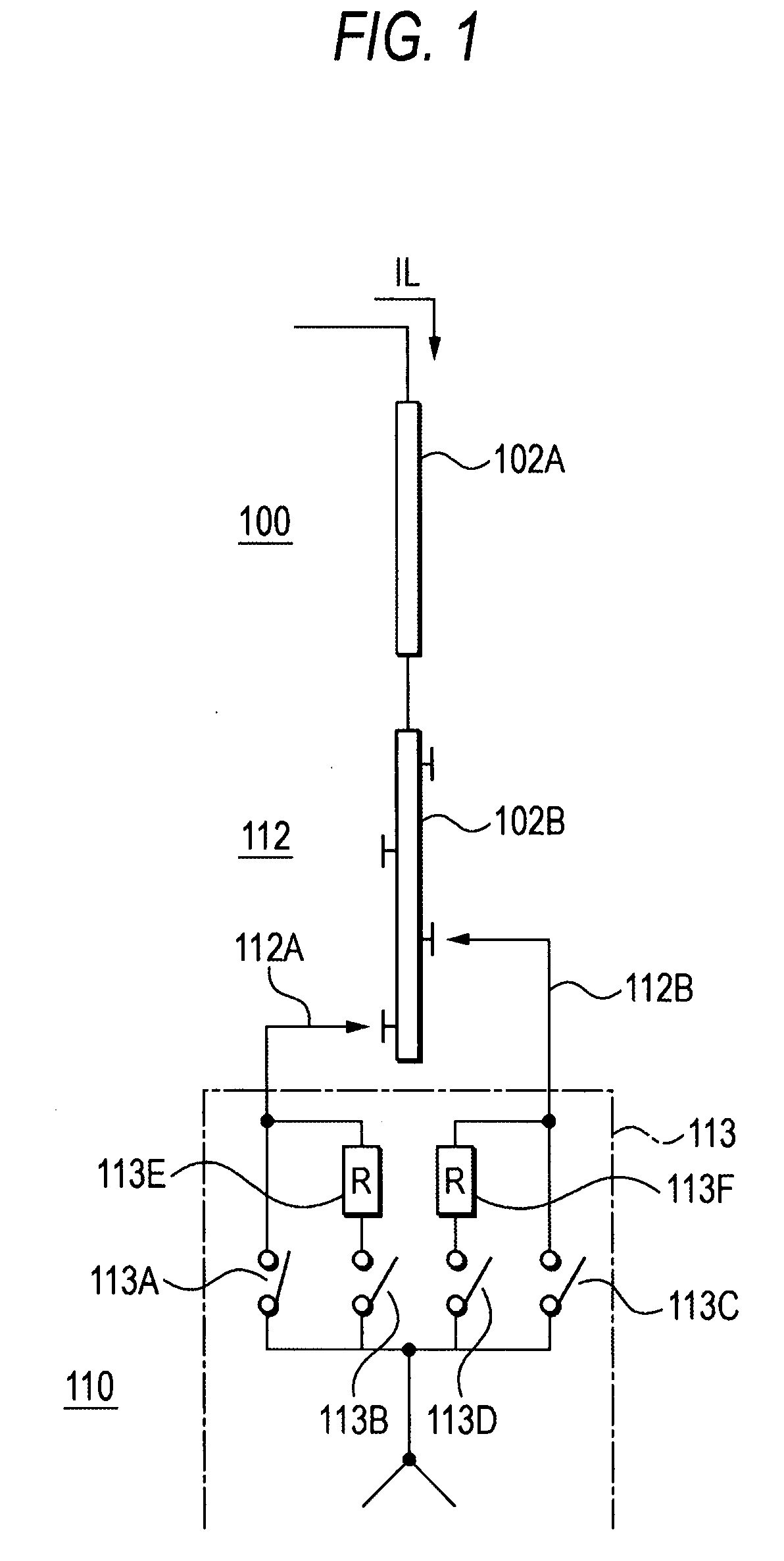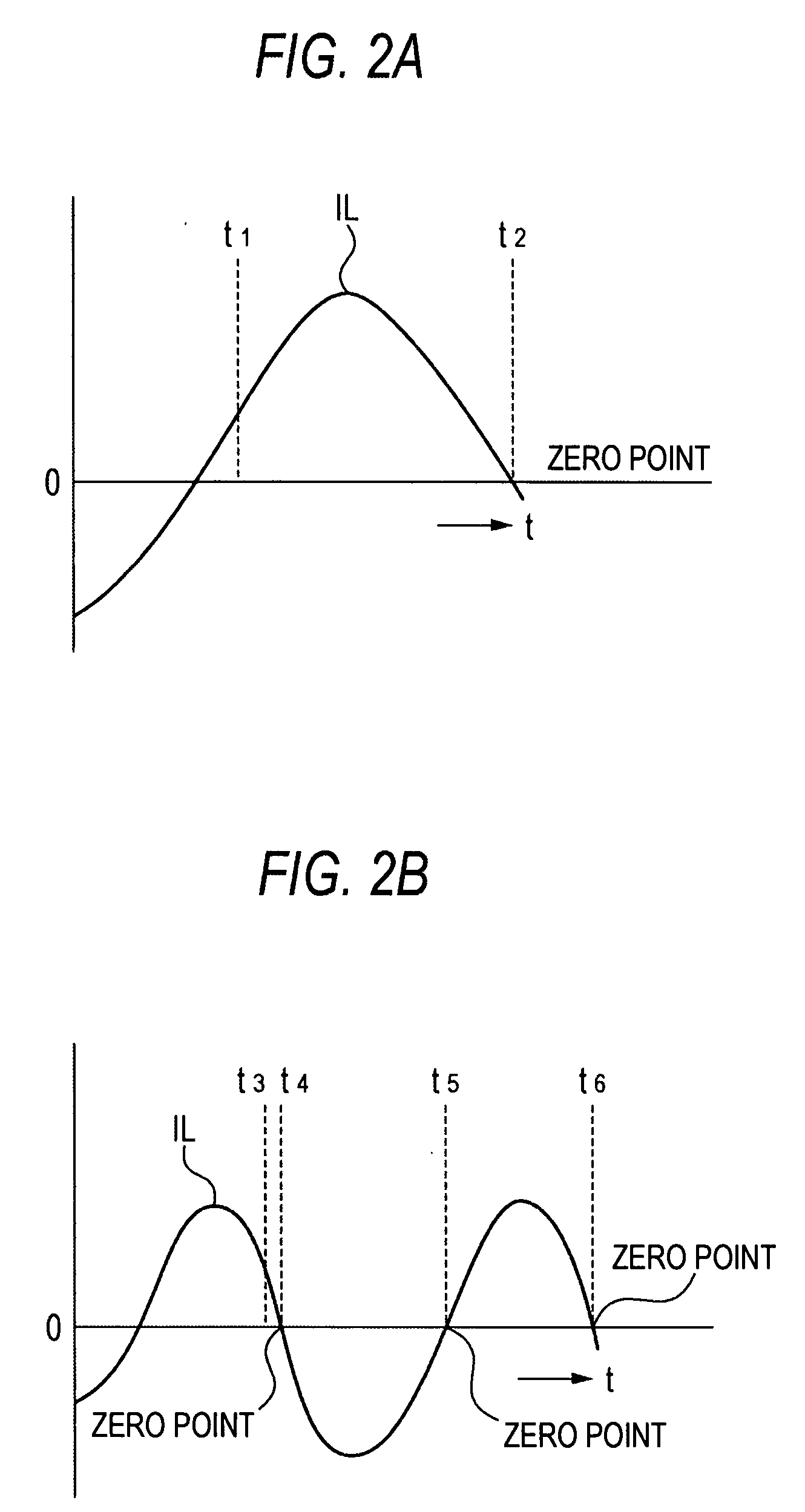Device and method for controlling changing operation of on-load tap changer
a technology of changing operation and device, which is applied in the direction of motor/generator/converter stopper, dynamo-electric converter control, machine/engine, etc., can solve the problems of small time difference for changing operation, short circuit between taps, and difficulty in adjusting the plurality of tap changers
- Summary
- Abstract
- Description
- Claims
- Application Information
AI Technical Summary
Benefits of technology
Problems solved by technology
Method used
Image
Examples
first embodiment
[0049]FIG. 1 is a diagram of a general example of a resistor type on-load tap changer (hereinafter simply as “LTC”). FIG. 1 shows a one-phase part on the secondary side of a three-phase transformer in a star connection. The transformer 100 includes a secondary side main winding 102A, a secondary side tap winding 102B and an LTC 110 that carries out tap changing to the secondary side winding 102B.
[0050]The LTC 110 includes a tap selector 112 having an odd-number side tap selector 112A and an even-number side tap selector 112B and a diverter switch 113 connected to the tap selector.
[0051]The diverter switch 113 includes an odd-number side main contact 113A, an odd-number side resistor contact 113B, and an odd-number side current limiting resistor 113E connected to the odd-number side tap selector 112A, and an even-number side main contact 113C, an even-number side resistor contact 113D, and an even-number side current limiting resistor 113F connected to the even-number side tap select...
second embodiment
[0071]According to a second embodiment, as a method of controlling the changing operation of LTCs when transformers are operated in parallel, the shaft alignment position is adjusted so that the operation positions of the diverter switches of the LTCs are not in coincidence at the connecting positions of coupling shafts that mechanically couple the LTCs and motor operation mechanisms that drive the LTCs. In this way, transient current superposed with DC current in the diverter switch in each of the LTCs can be prevented from being interrupted.
[0072]FIG. 8 is an equivalent circuit diagram of two LTC transformers operated in parallel, and FIGS. 9A to 9C show the waveforms of current in the equivalent circuit in FIG. 8.
[0073]In FIG. 8, 300 represents an AC power supply, 100 and 200 represent the LTC transformers operated in parallel, 110 represents an LTC operated prior to the other, 210 represents a succeeding LTC that operates delayed in time from the preceding LTC 110, and 400 repre...
third embodiment
[0100]According to the method of controlling the changing operation according to the second embodiment described above, the coupling positions of the output shafts of the motor operation mechanisms and the LTC main bodies are shifted so that the operation positions of the plurality of LTCs are not in coincidence. As will be described, according to a third embodiment, the same function is achieved by changing the point to start the motor operation of a plurality of motor operation mechanisms.
[0101]FIG. 19 is a diagram of the configuration of motor circuits that drives motor operation mechanisms according to the third embodiment. In a motor circuit 115 that drives the motor operation mechanism of an LTC 110 and a motor circuit 215 that drives the motor operation mechanism of an LTC 210 operated in association with the LTC 110, timers 115G and 215G are connected to the input power supplies of the motor circuits 115 and 215, respectively, the timing contacts 115H and 215H of the timers ...
PUM
 Login to View More
Login to View More Abstract
Description
Claims
Application Information
 Login to View More
Login to View More - R&D
- Intellectual Property
- Life Sciences
- Materials
- Tech Scout
- Unparalleled Data Quality
- Higher Quality Content
- 60% Fewer Hallucinations
Browse by: Latest US Patents, China's latest patents, Technical Efficacy Thesaurus, Application Domain, Technology Topic, Popular Technical Reports.
© 2025 PatSnap. All rights reserved.Legal|Privacy policy|Modern Slavery Act Transparency Statement|Sitemap|About US| Contact US: help@patsnap.com



